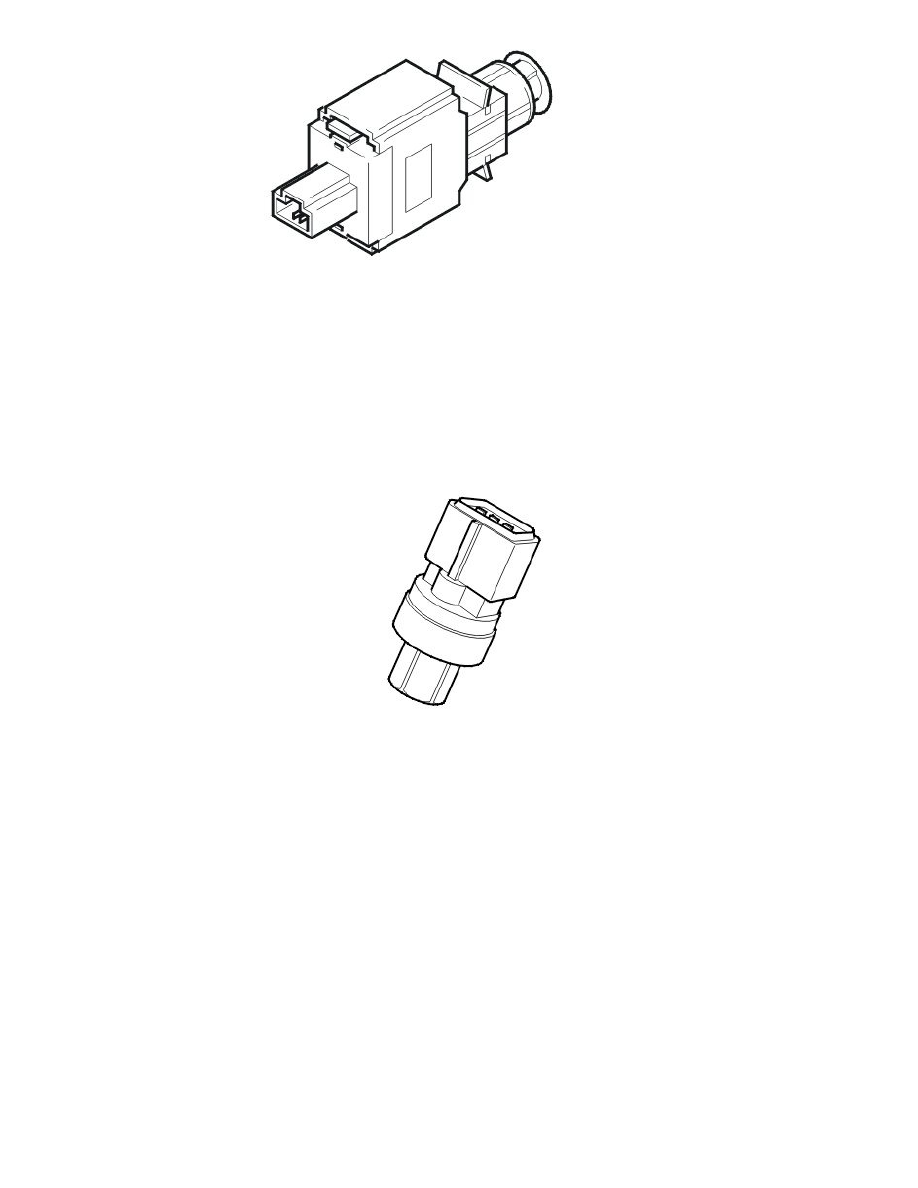XC90 AWD L6-3.2L VIN 98 B6324S (2007)

The purpose of the brake light switch is to provide the engine control module (ECM) with information indicating whether the brake pedal is depressed.
When the brake pedal is pressed down, a signal is sent to the Engine control module (ECM), which turns off the cruise control (if it is activated). The
brake pedal position sensor also handles the function for switching off cruise control. For more information, see Design and Function, Brake control
system, design.
The brake light switch is supplied with power from the ignition switch (terminal 30). When the brake pedal is depressed the switch closes and a high
signal (12 V) is transmitted to the engine control module (ECM).
The stop lamp switch can be diagnosed by the engine control module (ECM) and its status (depressed or not) can be read off.
The brake light switch is on the pedal box by the brake pedal.
A/C pressure sensor
The air conditioning (A/C) pressure sensor detects the pressure in the high-pressure side of the air conditioning (A/C) system. See also: Function,
B6324S See: Powertrain Management/Computers and Control Systems/Description and Operation/Engine Control Module (ECM)/Function
The sensor is linear. It is grounded in the control module and supplied with a 5 Volt current from the control module. A linear signal (between 0-5 V
depending on the pressure in the air conditioning (A/C)) is transmitted to the control module. Low pressure produces low voltage, high pressure produces
high voltage. The air conditioning (A/C) pressure sensor is affected by the pressure in the high-pressure pipe of the air conditioning (A/C) system
(narrow pipe).
The engine control module (ECM) can diagnose the air conditioning (A/C) pressure sensor. The sensor value can be read off using the diagnostic tool.
Accelerator pedal (AP) position sensor
